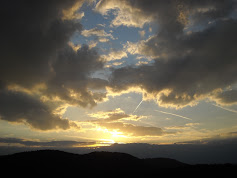John Lafferty was only able to enjoy building his western dream for a few years, however. In late 1814, he was wounded at the Battle of New Orleans and died a few months later after returning home. History tells of his burial somewhere near his cabin. Unfortunately, the cemetery that likely bore his body in death was bull-dozed a few years ago...the stones carried off for use in some construction project.
This area of the river was later home to Cherokee and Shawnee after the western bank of the river was ceded to the Cherokee Nation in 1817. Its name during this time was "The Buck Horn". We visited the site of an Indian Burial Ground during our adventure from which artifacts were collected early in the 20th century by the University of Arkansas. Included in the collection was the skeleton of an individual who was buried in a seated position facing east. Also buried in this Native-american burial ground is Methotaske, Tecumseh's mother.
A number of civil war battles/skirmishes were also fought along this stretch of the White River and areas nearby, including the "Battle of Buck Horn" where several men from the Union and Confederacy were killed and wounded. This engagement was between General J.O. Shelby's confederate guerrilla forces and a Union Company under the command of Captain Bill Williams that had been terrorizing the area for some time. Some of the structures that stood during the battle still stand today. In fact, a lengthy stacked rock wall along the base of the ridge running parallel to the river-bottom was constructed primarily to defend against Union troops out of Batesville. Area landowners lent and leased their slaves in the effort and the whole community participated in the project.
Video Below!
Photos by Freda Cruse Phillips












































2 comments:
Denny,
As always enjoy the photos and videos...but, you need to correct this story...Joseph Orville Shelby was a Confederate commander, not Union.
Bill Hodges
Yikes!
I had re-worded the entire paragraph during my proofing and must have got lost. A final proof would have been in order, eh?
Thanks for pointing it out, Bill!
Post a Comment